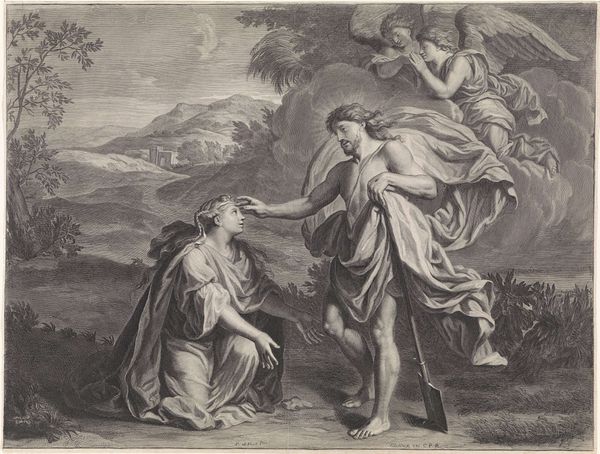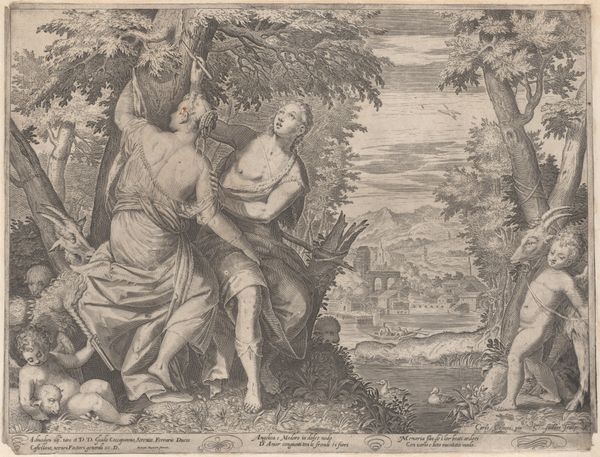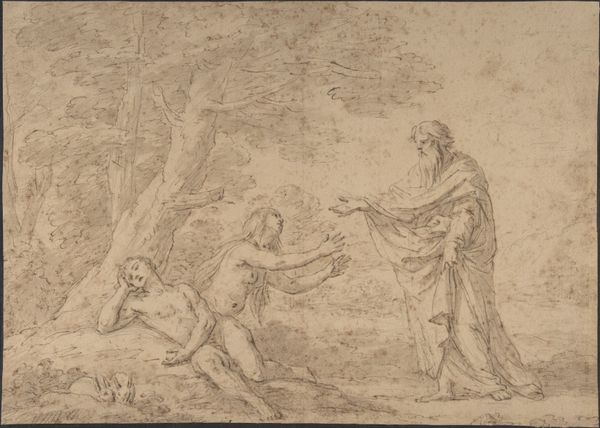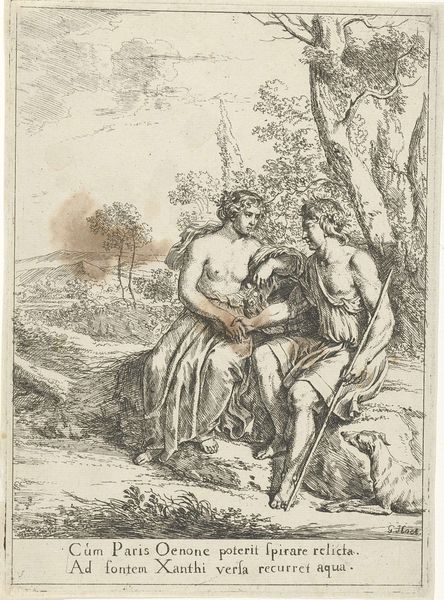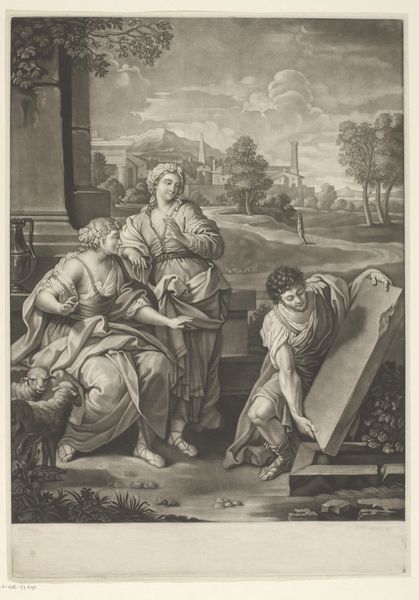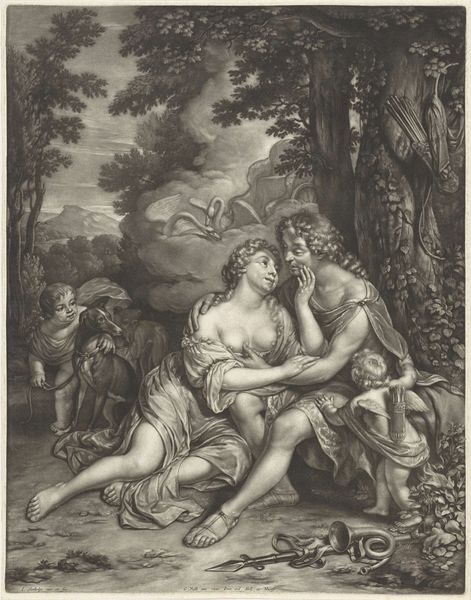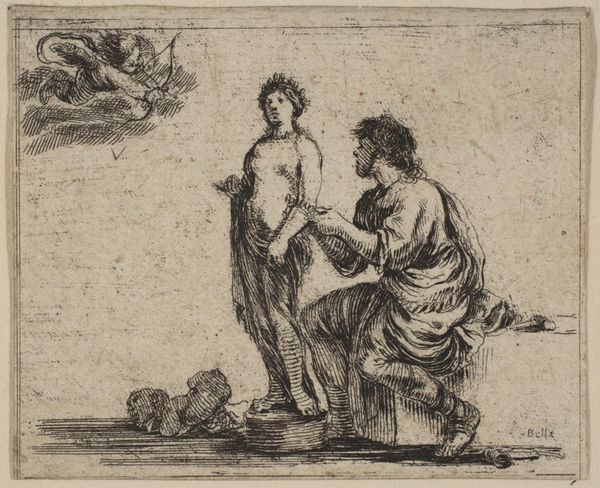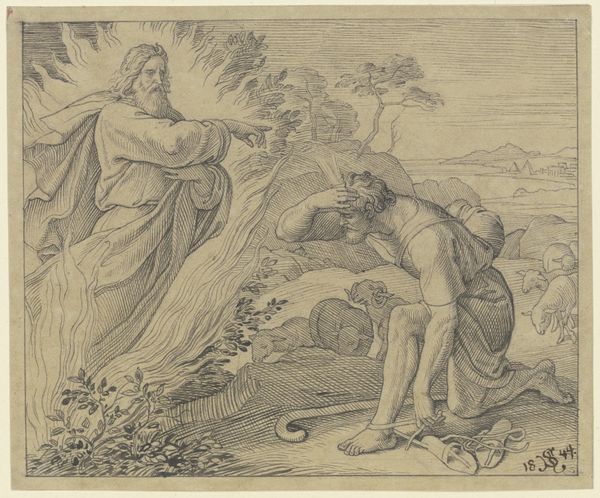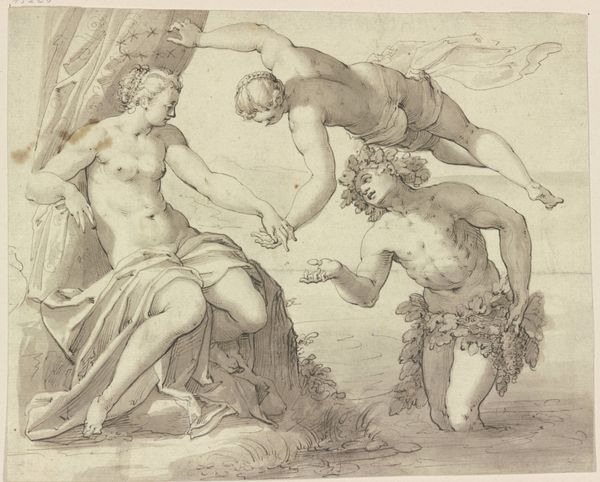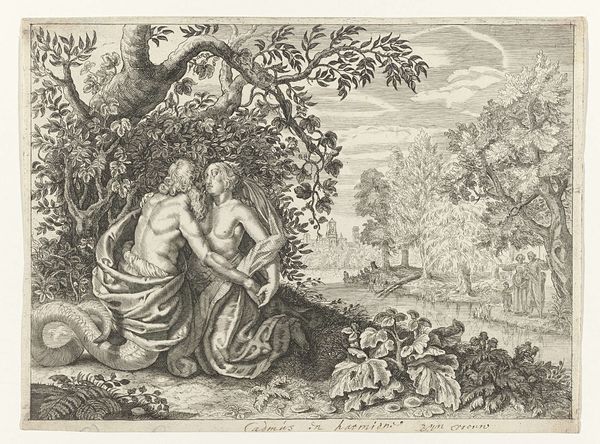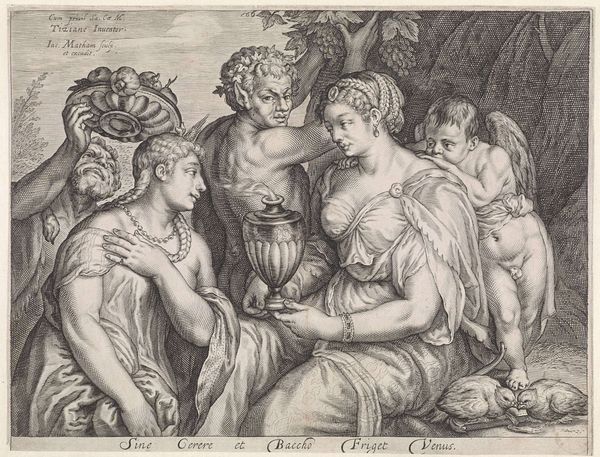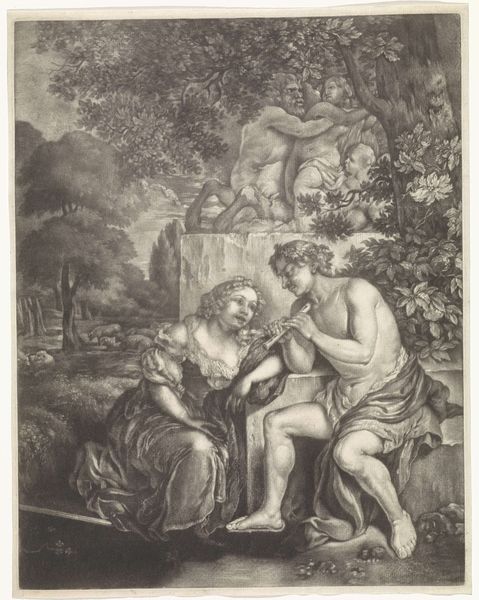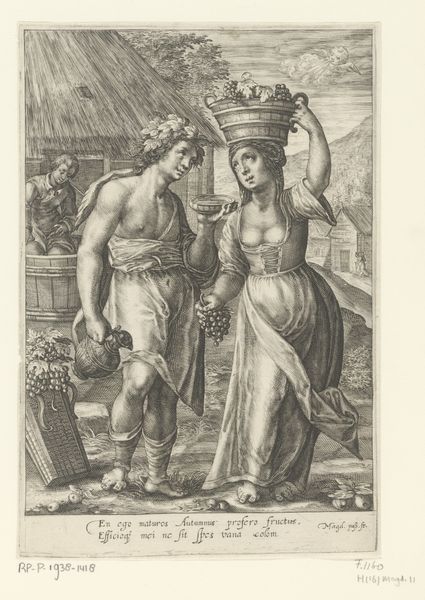
drawing, print, pencil
#
portrait
#
drawing
# print
#
landscape
#
charcoal drawing
#
figuration
#
pencil drawing
#
pencil
#
portrait drawing
Dimensions: sheet: 7 1/16 x 10 11/16 in. (18 x 27.1 cm)
Copyright: Public Domain
Editor: This is "The Family of Cain," a drawing by Peter Oliver, created sometime between 1633 and 1647. The figures are rendered in monochromatic grays, which creates an unsettling, somber mood, don't you think? What can you tell me about this depiction? Curator: Indeed, the somber mood aligns with the biblical narrative. However, let's consider the broader socio-political context. Seventeenth-century art often served didactic purposes. Do you notice how Cain is depicted as both a protector and burdened, set against the burgeoning landscape? How might this portrayal reflect contemporary anxieties about land, lineage, and moral consequence in that era? Editor: So, it's less about simple illustration and more about contemporary viewers seeing themselves—their roles and anxieties—within the biblical story? The contrast between Cain's muscular physique and his almost averted gaze seems to speak to that. Curator: Precisely. The piece likely served as a moralizing exemplar within a culture deeply invested in biblical narratives. Think of the power dynamics at play, how societal anxieties might manifest within such a domestic tableau, and the role of images like this in shaping public morality. Is Cain being pitied, or is he a warning? Editor: I hadn't considered it as speaking to contemporary moral issues like that. Now I see it less as just a historical illustration and more as a social commentary, shaped by and reflective of the attitudes of its time. Thank you. Curator: It's rewarding to peel back those layers and appreciate art not only for its aesthetic value but also for its intricate connection to the society that birthed it. It truly underscores how the art world both shapes and is shaped by political forces.
Comments
No comments
Be the first to comment and join the conversation on the ultimate creative platform.
